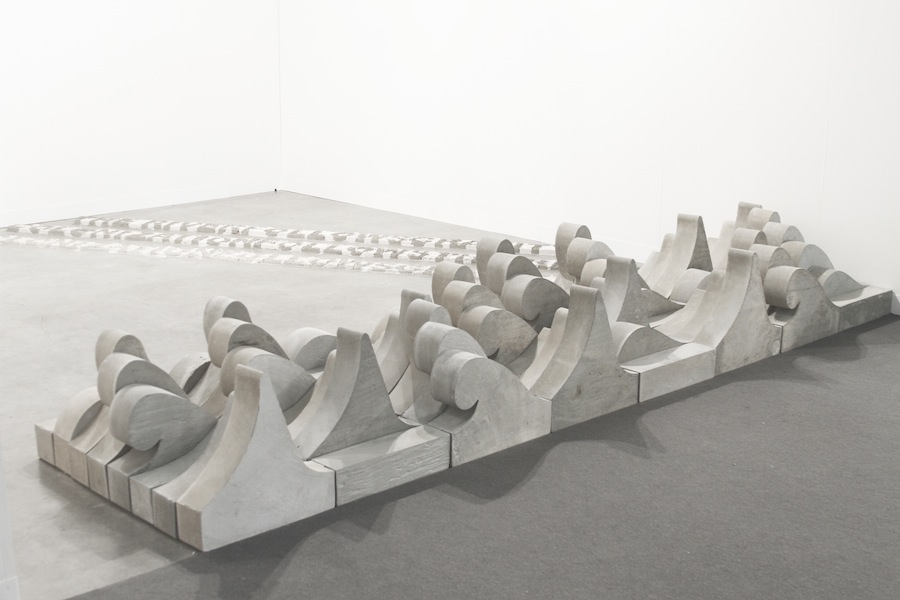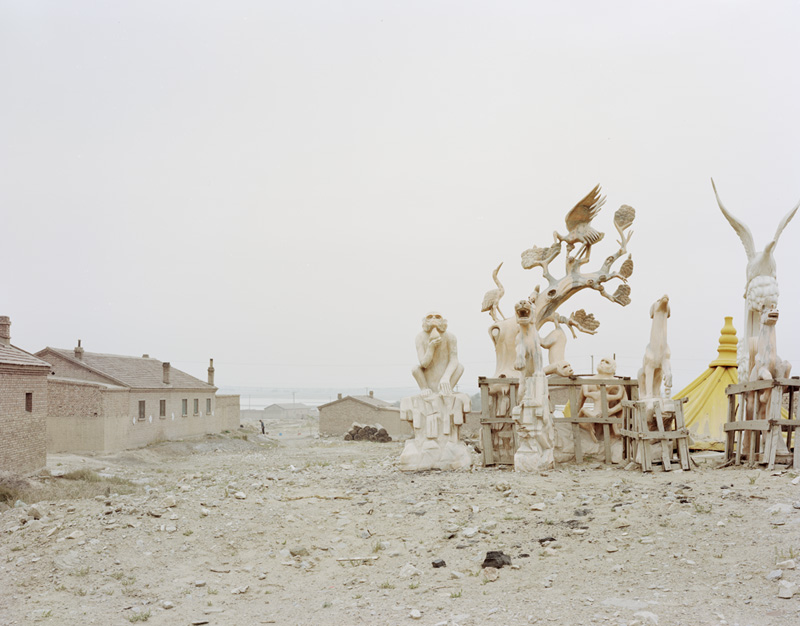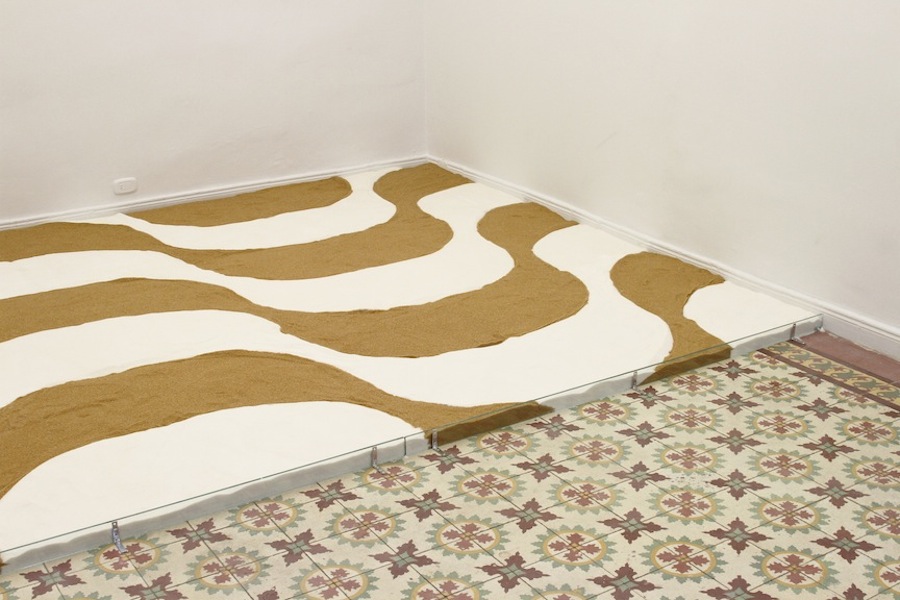Trópico entrópico
2012 - Installation (Installation)
Felipe Arturo
Defined as entropy, the second law of thermodynamics proposes that energy is more easily dispersed than it is concentrated. One basic illustration of entropy is to imagine white and black sand: once mixed together, it is highly unlikely that the contrasting grains of sand can be separated and restored to their original distinct color groups. Arturo’s Trópico Entrópico ( Entropic Tropics , 2012) considers the colonization of the American continent as a similarly irreversible process of cultural entropy. His inspiration derives from a place near Manaus in the Brazilian Amazon, where the Black River meets with the sandy-colored Solimões River, producing a river of two colors that extends over ten kilometers. In the late nineteenth century, the Brazilian rubber barons decided to commemorate this impressive natural phenomenon by covering the main square of Manaus with a design of black-and-white waveforms made from stones. The square is known as the Encontro das aguas (Meeting of the Waters). Decades later, Roberto Burle Marx used this same pattern in his famous Copacabana walkway in Rio de Janeiro. Since then, the design has spread across the continent to Lima, Bogotá, Cali, and beyond. Trópico entrópico uses this pattern to produce entropy in the exhibition space. Sugar, the material used, signifies one of many economic motivators for colonialism. Visitors are invited to collectively dissolve this modern design by walking on the brown and white sugar, and participating in its entropic mixing.
Felipe Arturo considers elements from urbanism, architecture, and art in relation to politics, history, geography, and economy. His works and projects often manifest as sculptures, installations, or videos, departing from concepts such as structure, sequence, and matter. They are deeply influenced by vernacular architecture and construction techniques, and reflect processes of assimilation and resistance to colonial and postcolonial processes. He frequently combines the language and materials of Modernism (e.g., concrete) with the informal methods of autoconstrucción (self-construction).
Colors:
Related works featuring themes of: » Andes Region, » Colombian
» see more

© » KADIST
Nicolás Paris
2012Nicolas Paris studied architecture and worked as an elementary school teacher before he decided to become an artist...

© » KADIST
Mateo Lopez
2012With Roca Carbón (Charcoal Rock, 2012) and Roca Grafito ( Graphite Rock , 2012), López plays with our relationship to inert and unremarkable objects such as rocks...

© » KADIST
Claudia Joskowicz
2007The primary interest in the trilogy is Joskowicz’s use of cinematic space, with long tracking shots that portray resistance to habitual viewing experiences of film and television...

© » KADIST
Claudia Joskowicz
2015Some Dead Don’t Make a Sound (Hay muertos que no hacen ruido) is a single-channel video by Claudia Joskowicz that features the Mexican legend of the Weeping Woman (La Llorona) as its main protagonist...
Other related works, blended automatically
» see more

© » KADIST
Felipe Arturo
2012Primero estaba el mar ( First Was the Sea , 2012) is a system of equivalences between syllables and silhouettes of waveforms cast in cement...

© » KADIST
Nicolás Paris
2012Nicolas Paris studied architecture and worked as an elementary school teacher before he decided to become an artist...

© » KADIST
Mateo Lopez
2012With Roca Carbón (Charcoal Rock, 2012) and Roca Grafito ( Graphite Rock , 2012), López plays with our relationship to inert and unremarkable objects such as rocks...

© » KADIST
Nicolás Consuegra
2014Consuegra’s Colombia is a mirror made in the shape of the artist’s home country—a silhouette that has an important resonance for the artist...
Related works sharing similar palette
» see more

© » KADIST
Aykan Safoglu
2013Off-White Tulips is an intimate, meditative, and tender essay-film composed as a fictional exchange between Black gay writer James Baldwin and the artist, Aykan Safoglu...

© » KADIST
Caspar Heinemann
2022Glorie #7 by Caspar Heinemann is made from cardboard boxes in which the artist received deliveries at home during lockdown, as well as other materials that he uses in an improvisatory way...

© » KADIST
Alicia McCarthy
2010A painting reminiscent of a certain “naive primitivism,” Untitled (the way in is the way out) is representative of McCarthy’s work...
Other works by: » Felipe Arturo
» see more

© » KADIST
Felipe Arturo
2012Primero estaba el mar ( First Was the Sea , 2012) is a system of equivalences between syllables and silhouettes of waveforms cast in cement...
Related works found in the same semantic group
» see more

© » KADIST
Zhang Kechun
2011Zhang Kechun’s photographic series The Yellow River documents the effects of modernization along the eponymous Yellow River, the second longest in Asia...

© » KADIST
davi de jesus do nascimento
2022davi de jesus do nascimento’s earthy paintings, from the series sorvedouro , recall his memories as an essentially organic matter...



